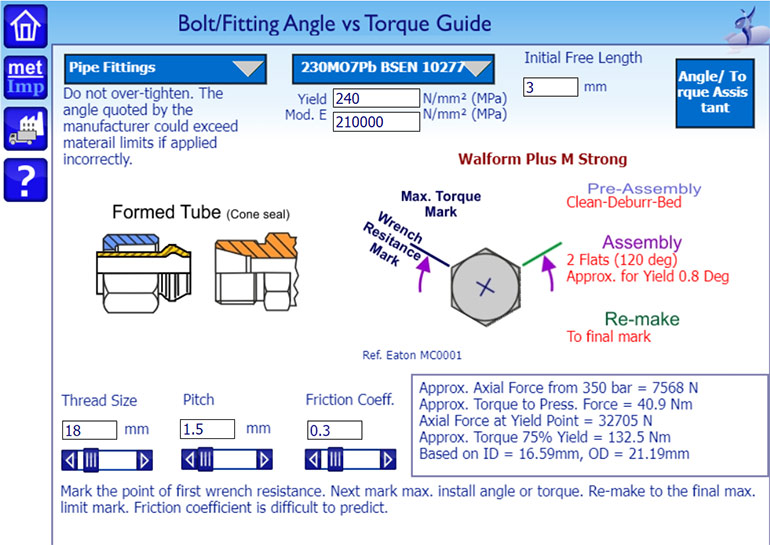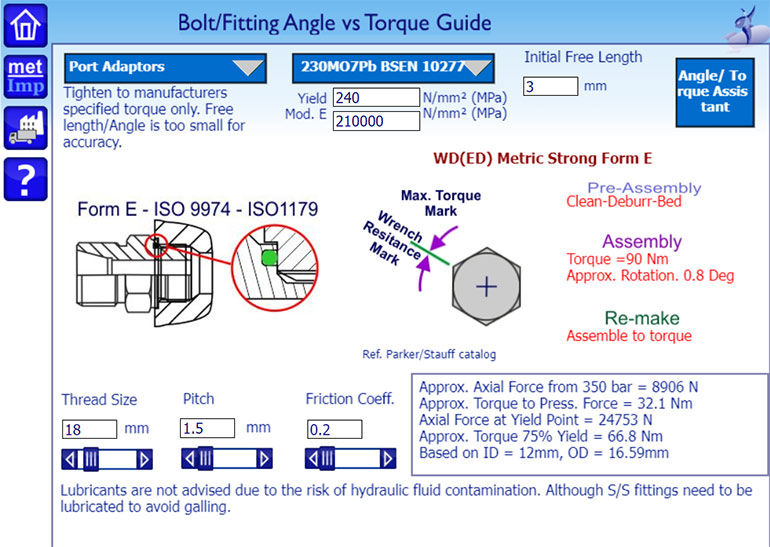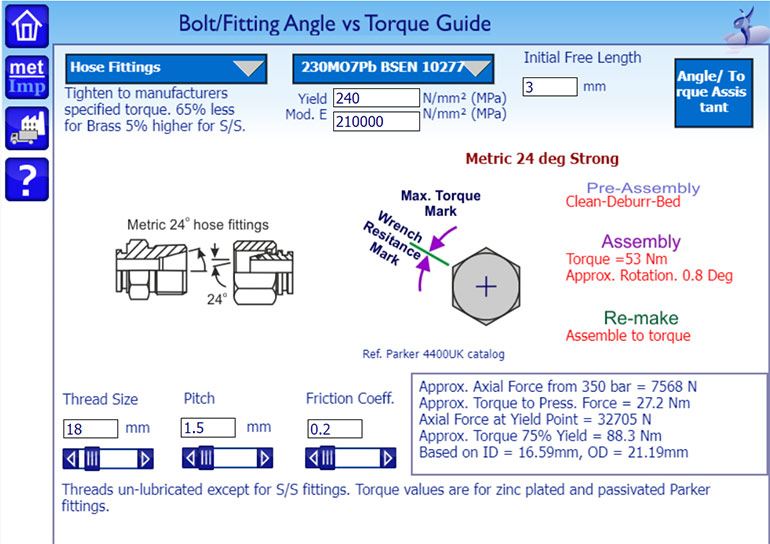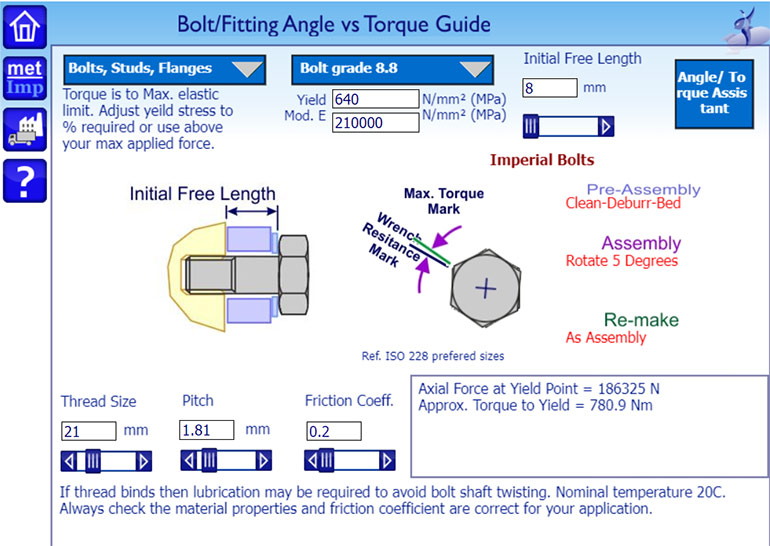Contributed by Gary Molton • BSc, Owner, Engineering Adventures
Poor assembly or using the wrong type of fluid power fitting has been shown to increase risk of fluid leakage and industrial injury. Fitting designs have changed considerably over the last 30 years to reduce these risks but this has resulted in a myriad of assembly instructions, often changing between sizes and sometimes needing different values for pre-assembly, first assembly, and refitting torque.
This article briefly explains how each fitting type works and why modern fittings perform more effectively. I also explain how to use our new app containing the tightening instructions for the most common fitting ranges.

Hydraulic pipe fitting requirements
First, we should remember four key requirements that hydraulic fittings must satisfy:
- Be strong enough to prevent pipework or fittings from failing. (They become a deadly missile when they do.)
- Prevent leakage of the high-pressure hydraulic fluid from the system.
- Ensure optimum flow rates are maintained.
- Compensate for component misalignments and movement during operation.
Many studies have been conducted over the years into fitting performance, but it is important to emphasize that the duty cycle matters. Some old-style reusable or compression-style fittings may still be acceptable in low-pressure process industry applications, but they are unlikely to last an hour in an industrial servo system. Modern formed pipe ends are one of the cheapest solutions, yet are still capable of performing in the toughest environments.

Different fitting types
Although used in the past, there aren’t many Swagelok-style fittings still being used in fluid power systems. These require accurate pipe tolerances and a careful assembly procedure but can’t cope with the misalignment and vibration seen in fluid power applications.
Cutting rings have been widely used over the years and their designs have significantly improved with the development of shaped ferrules, double ferrules, and elastomeric seals. However, they are still prone to incorrect assembly torques and cannot survive the most aggressive applications.
Metal face-to-face sealing removes the requirement for different pre-assembly, first assembly, and repeat assembly torques. Conical faces generally seal better than flat faces and can be used with or without elastomeric seals. Conical faces have the additional benefit of aligning the pipework and allow repeated reassembly without reducing performance. Pipe end-forming machines have also made this type of pipework easy to manufacture and very cost effective. More information about the different fitting types can be found at e4training.com.

Tighten by angle, not torque
All the above fitting types will need to be assembled with a specific torque depending on their size and whether their design tends to ‘bed in’ more each time it is tightened. Unfortunately, torque wrenches are often difficult to use on pipework and can be quite unreliable, particularly in the presence of lubricating fluids. For this reason, most manufacturers recommend that the assembly tightness is set by the angle of turn, rather than a torque spanner. The procedure is typically the following:
- The nut is first tightened by hand until it sits firmly against the metal seat.
- A line is drawn across the nut and manifold with a permanent marker pen.
- A spanner is used to turn the nut through a specified angle. This angle will vary between fitting size and type but is typically around a quarter or half a turn.
- The manifold is remarked with the pen to show that the fitting has been tightened and if it starts to come undone.
Deciding what is the correct torque to apply to a nut or bolt is very complicated and can depend on the mounting face wall thickness, washers, operating conditions, etc. In summary, we are trying to make sure that the internal stress in the threaded fitting is above what it will see while the system operates, but below its ultimate tensile stress (uts) of the material.

Finding the correct angle
The inherent danger from poorly assembled hydraulic fittings means that it is vital that everyone completing this work has had suitable training on the fittings being used. Once familiar with each fitting then the correct angle of turn values is quoted in the fitting manufacturer’s datasheet. Unless you are assembling the same type of fittings every day it is dangerous to try to remember these values as manufacturer versions do change and each size may also be different.
To help identify these variations there is a useful tool on the e4training.com website that has collated the information from the manufacturer datasheets for each fitting type and added it into an easy-to-use calculator. This tool allows you to select different fitting types along with their material to find their fitting instructions. It also includes a calculator to predict the angle required to turn different length bolts to achieve a desired torque.
To use this fitting guide, go to e4training.com or download the app. Select the fitting type and size from the dropdown list box. Check the fitting image and thread size against the fittings you have used. On the right-hand side of the app are the fitting instructions for pre-assembly, assembly, and remaking the fitting. Within the highlighted box are some calculated torque and stress figures along with fitting dimensions from which the values have been calculated. Additional notes may be shown at the bottom of the app where it has been available.
While this tool is a good way of checking the correct angle to tighten fittings the user should be aware that not all the materials and potentially different supplier dimensions are included in the generic design datasheets so the calculations should be used with care and can only be taken as a predictive guide.
Engineering Adventures
e4training.com
Filed Under: Components Oil Coolers, Engineering Basics, Featured, Fittings, Couplings & Adapters, Hose Assembly Tips, Technologies